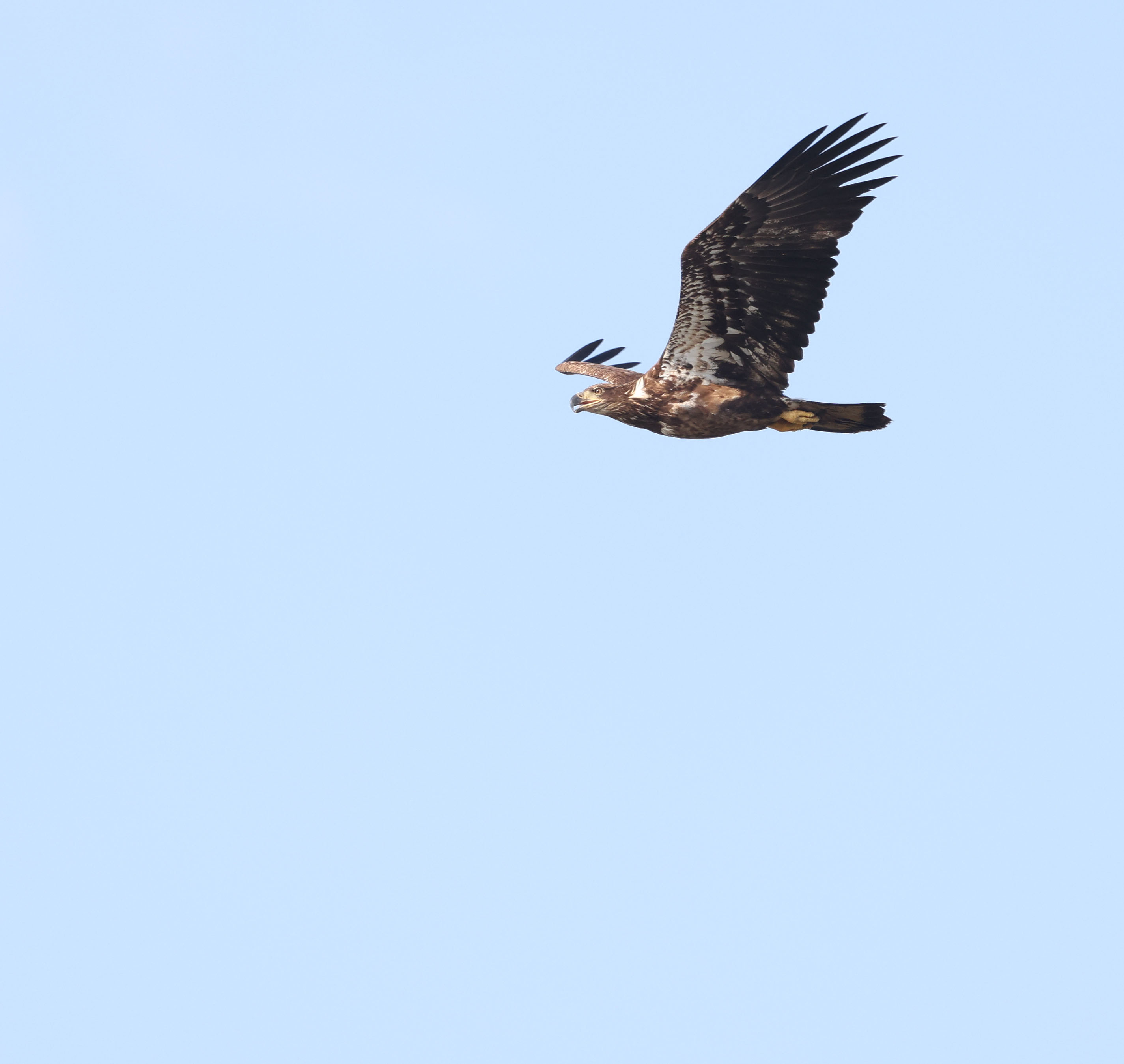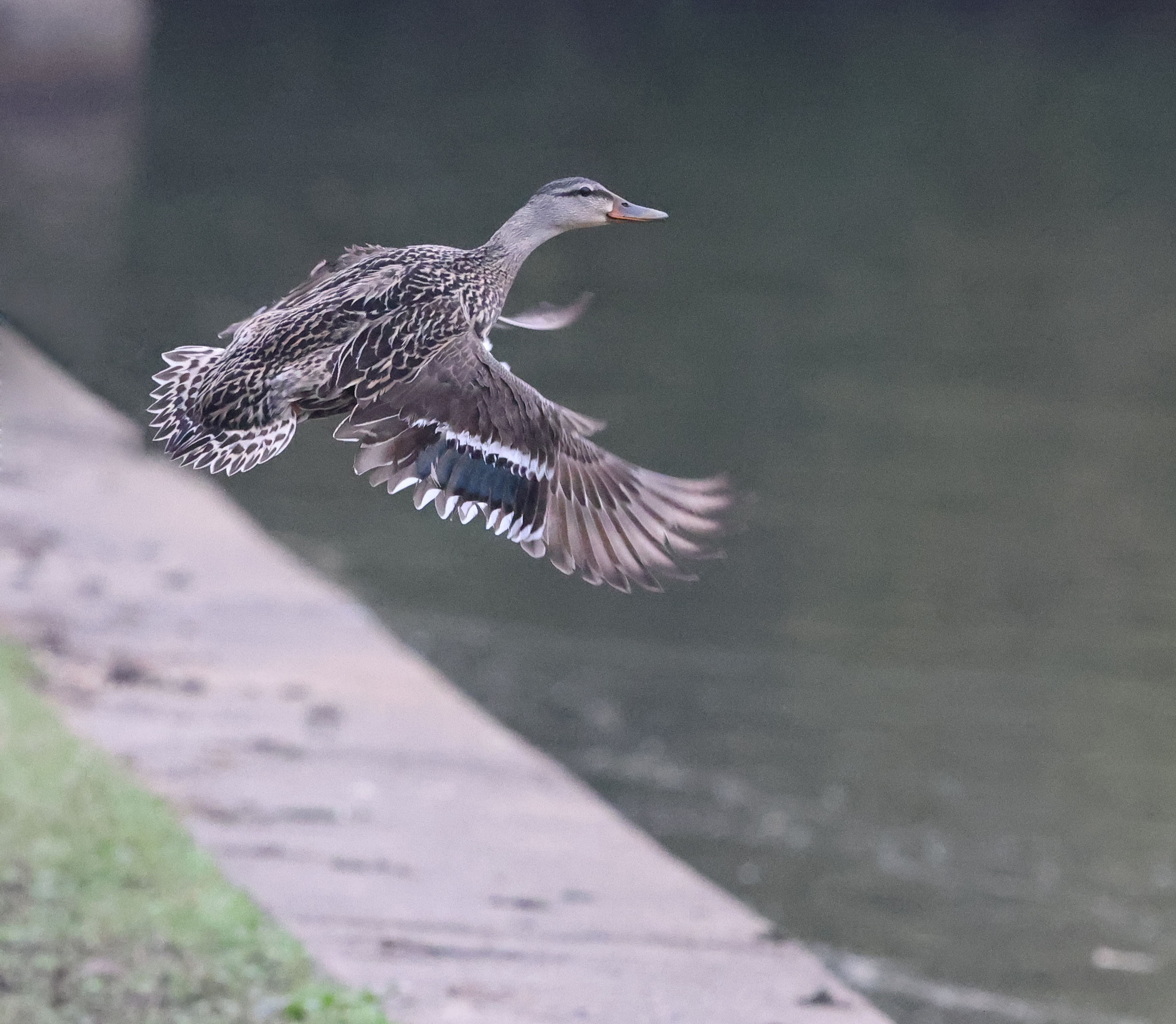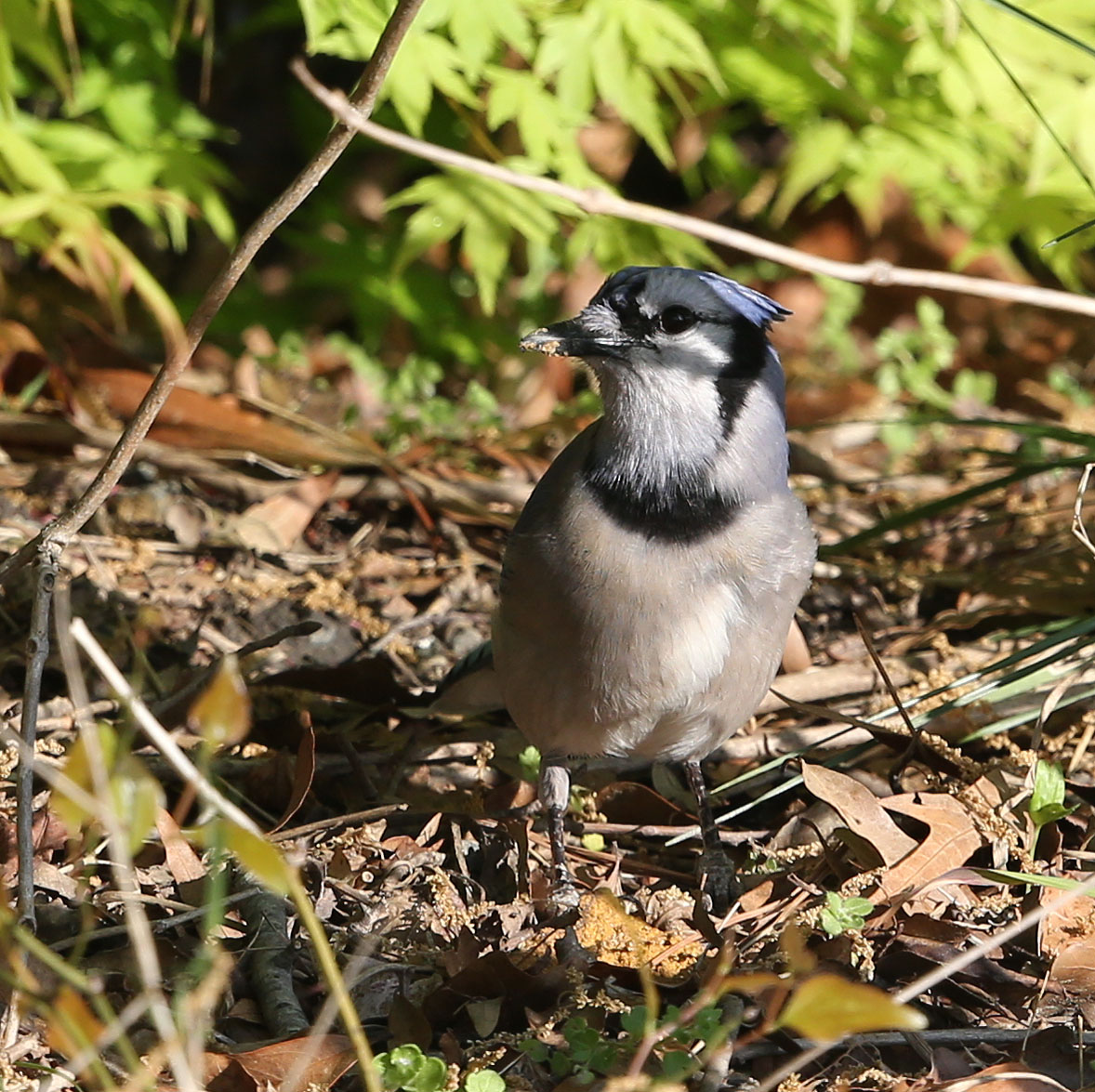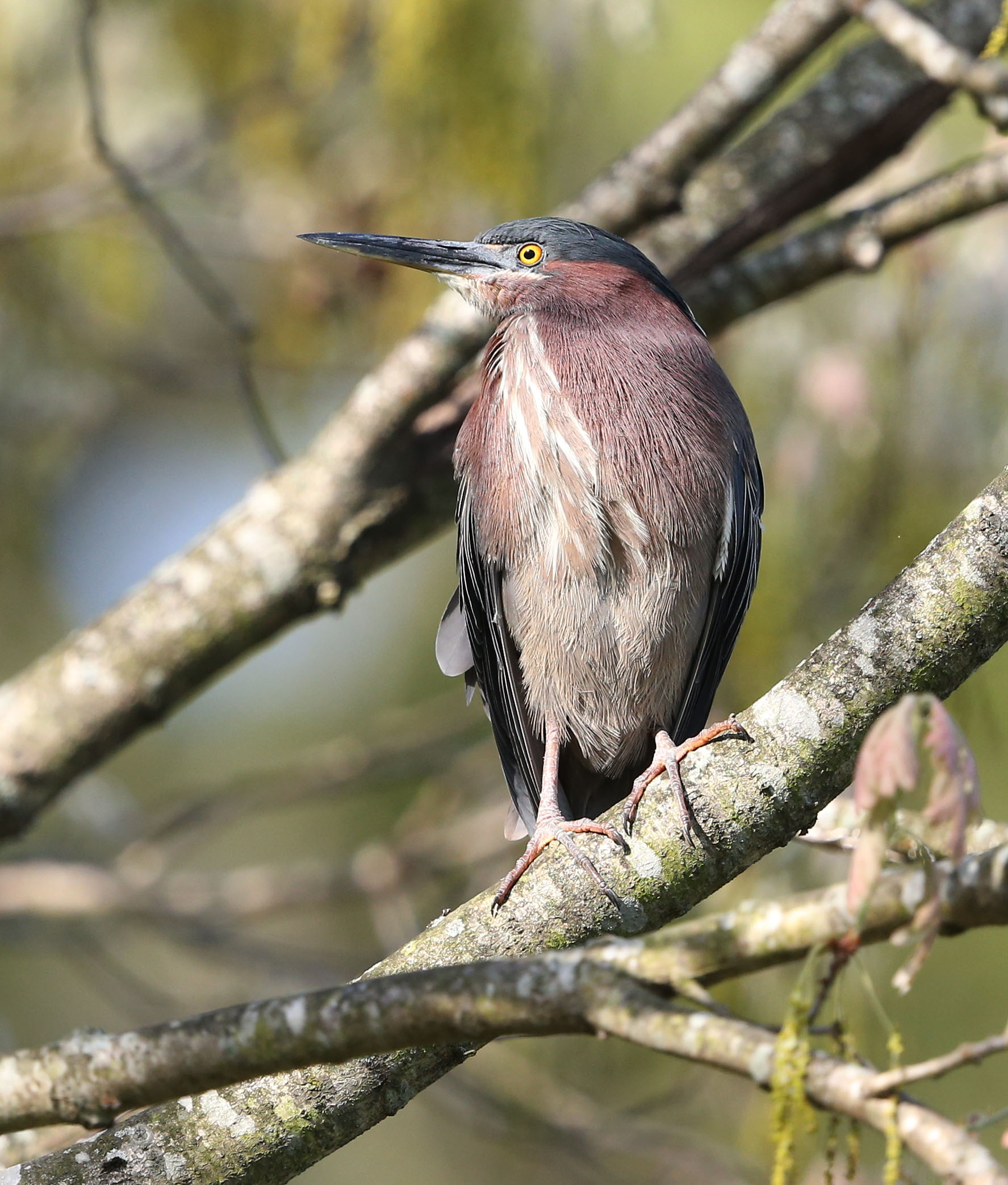Let’s take a quick break from reviewing the Canon EOS R5, and let’s look at some more “signs of spring” photos. These were grab and go, but they’re fun and they highlight what’s going on in the bird world in early April in SE Virginia. In order, there’s a Yellow-rumped Warbler molting into breeding plumage, a Blue Jay with a zip tie, a second Blue Jay with a stick, and a European Starling on the edge of its nest hole. All were nest-building, except the Yellow-rump. The Yellow-rump was gearing up to head to its breeding site near Quabbin Reservoir–Gate 40. Click on any of the 4 birds to view a slideshow.




Speaking of spring and nest-building, here’s a 4/11 recording of a male Eastern Meadowlark on territory at Money Point in Chesapeake. It was singing its heart out near the top of a tree overlooking an un-mowed field there (suitable habitat). My mic also picked up the wind (of course), as well as a Common Yellowthroat, a Laughing Gull, and a Northern Mockingbird.
The Canon EOS R5, Cont’d
We began to cover the R5 in “From Birds to Photo Gear” and we probed a little deeper in “A Game- Changing Bird Photography Camera.” There, we left off by discussing its high-resolution, 45-megapixel (45-MP) sensor and how that sensor can benefit photographers needing extra reach. Let’s discuss that a little further and then touch on a few other features (weight, autofocus and ISO performance, the shutter).
High Resolution
Todd Vorenkamp, whose work appears in the B&H Photo and Video Explora Blog, wrote a piece in which he said that one of the main reasons people upgrade their cameras is to get one with more resolution. But he seemed to say that 16 MP was enough and that too many photographers were fruitlessly chasing after more. I responded by sending him this: “While I’ve always thought that creating cameras with more and more megapixels was a marketing ploy, I changed my mind when I rented a Canon EOS R5. It appears that more megapixels/higher resolution can work magic. I now consider resolution more important than I did before.” Here’s his follow-up, which makes lots of sense: “There is certainly something to be said for more resolution—especially if you are cropping extensively or looking for extra reach for sports and wildlife photos. For most photographers, however, there is little to be gained [from more resolution].” He went on to say that 16-24 MP is usually enough.
Before we move on, here’s another Osprey shot where those 45 MP came in handy. This is the same male (top bird) that was defending its nest against 4 male intruders.

These two birds were distant and small in the original image, but they retained surprisingly good detail even after this heavy crop.
Weight and Ergonomics
I’ve already mentioned the R5’s lighter weight, which makes it easier to hand hold. I wrote earlier that with the R5 I can hold my gear up longer as I wait for things like a robin’s side-view pose or as I track an Osprey in flight until it alights on its nest. Brian Carnathan said something key about weight in his R5 review: “If you are carrying a camera a lot, lighter camera weight can help keep your energy levels up, and creativity stays elevated with energy levels.” Ken Rockwell, who also reviewed the R5 noted “how well the camera just gets out of the way.” The camera’s weight is a big asset. So is the camera’s ergonomics. It feels great in the hands. The engineers at Canon did their homework. I’m reminded of something another photographer shared on FM Forums: “I plan on using the R5 for quite a while. I have no desire to ever go back to the 1-series bricks.” He went on: “The R5 is a supremely capable camera, with outstanding AF, excellent image quality, good ergonomics, and everything else.”

Autofocus, ISO Performance, Etc.
Brian noted something else in his R5 review. The R5’s autofocus system is remarkable, and Canon considers it to be the best AF system ever. I’ve already written about the camera’s ability to detect and track people and animals and, more importantly, the eyes of both. Dave, on FM Forums, wrote the following when he posted a photo of a hummingbird in flight: “This animal eye tracking is insane. It picks up on insect eyes as well. I see what those early reviewers were talking about now when they said it would find and lock onto their subjects before they could find them in the VF [viewfinder]. This has happened to me a lot. It’s a little scary.”
Let me add to the above that unlike many cameras, the R5 AF can find and lock onto subjects even in very dark conditions. I had little trouble on a recent, gloomy morning focusing on this opportunistically feeding Fish Crow. I was at Lakeside Park in Chesapeake.

A few minutes earlier, I’d captured this female Mallard.

Neither of the above photos is a great one. The crow lacks detail and the lake bulkhead is a distraction. But I include both to show you the R5’s capability. It was a breeze capturing the duck.
As you can imagine, I captured the crow and duck at high ISO speeds. I reached the upper limit of my Auto ISO range (I usually shoot in manual mode with Auto ISO). Believe it or not, I shot both birds @ ISO: 12800. If you’re interested, I captured the duck using a shutter speed of 1/1600s. I seldom go above that. IMHO, the ISO performance of the R5 is also insane.

I could go on about this camera, but I might lose some of you. In general, I loved the EVF (electronic viewfinder) and the ability to see exposure settings live while shooting. I also liked having the ability to shoot @ 12 frames per second. I never used the silent electronic shutter (20 FPS) because I need sound when I shoot. Also, the IBIS (in-body image stabilization) was cool, but it’s most effective at shorter focal lengths. I don’t think it benefitted me much as I was using 500mm glass.
The Mechanical Shutter
Let me say one thing quickly about the R5 mechanical shutter. It’s quiet! Several weeks ago, while visiting family in PA, I went to a state park with my “1-series brick,” my Canon EOS-1D X DSLR. Its shutter is loud! I approached some newly arrived Tree Swallows huddling and resting on a tree limb and began to photograph them from 75′ away. As I fired away in burst mode, I could see them react and stir. I’d never seen that before. Strangely, I lost those photos. But when I returned to VA, I noticed the same thing while shooting a Blue Jay. It was busy foraging, but when it heard the loud ID X shutter it stopped and looked up.

In both situations, I disturbed my subjects. I’ve written that my first consideration when photographing birds is an ethical one—to not disturb. One clear advantage of having a camera with a quiet shutter is that it helps to hide or minimize your presence, which allows you to shoot and take better photos (of normal, everyday behavior). The quiet shutter is another R5 feature that I enjoy and find helpful.
And This Just In
Hopefully, you’ve enjoyed reading my take on the Canon EOS R5. This has been a fun project.
What would an early spring bird blog be without at least 1 photo of a Green Heron? Here’s one, followed by a recording of the same bird. You may need to turn up the volume to hear its calls. I was close, but wasn’t using my best equipment. The bird alternated between preening, gazing about, and calling.

Quip, Question, Quote
I rented the Canon EOS R5 from Lensrentals, an online rental provider based in Memphis, TN. I’ve been doing business with them for years and recommend them highly. I know other readers of this blog feel the same way. If you send me your email address via the “Contact” button at the top, I can get you $25 off your first rental from the company.
Hi Dave,
Thanks for the series on the R5, I’ve enjoyed reading it. Can you let me know which len(s) you used during your shoots?
LikeLike
Thanks for reading, Scott. Here’s what I wrote in the first piece in the series: “I usually shoot with a Canon EOS-1D X DSLR with a Canon EF 1.4X III extender and Canon EF 500mm f/4 II attached. That’s a pretty decent setup that gets me close to the action.” I love that lens. Though it ain’t cheap, I, and many others, think it’s one of the best lenses out there. And it takes extenders well. It’s also the lens I used with the R5. I used it both with and without the 1.4X with the R5. Hope that helps!
LikeLike
Thanks Dave. I was curious if you had tried any of the RF “native” lenses to see how they compare with the EF lenses (autofocus performance, weight, build quality, etc)
-Scott
LikeLiked by 1 person
Hi Dave. I assume at your 12800 ISO shots you are using noise reduction software. Any details? Thanks for the interesting post. Loving my R5 + 1.4x + RF100-500 combo…
LikeLike
Thanks for reading and for your comment. Glad you’re enjoying the R5 with the new 100-500. Would love to learn more about what you think of that combo. Folks have asked me about using the R5 with native lenses, but I don’t have a clue from personal experience. No, I’ve never used noise reduction software, and didn’t with the Mallard shots. It’s mind boggling that ISO 12800 photos can look that good right out of that camera. That’s one of the reasons I decided to review it.
LikeLike
I just read a review of the R5 and thought of you. Here’s one thing the reviewer wrote: “I am shooting confidently in the field under most conditions, and with most lenses, without the need of carrying a tripod. Low-light shooting at ISO 12,800 is amazing, as is the 12 fps shooting of BIF.”
LikeLike